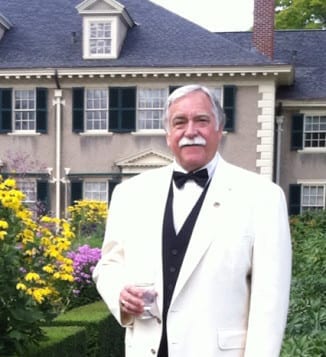With warmer weather upon us, we now have long, sunny days, better moods and, of course, the beach.
However, longer sun exposure does increase the risk of skin cancer. Melanoma is the most serious skin cancer, but fortunately it is not the most common. Basal cell carcinoma (BCC) and cutaneous squamous cell carcinoma (SCC) are more prevalent, in that order. Here, we will focus on these two types.
The incidences of these skin cancers are very difficult to pin down because they are not reported as readily.
However, most of us either know someone who has had these types of skin cancers or have had them ourselves. There were roughly 3.5 million nonmelanoma skin cancer treatments in the U.S. in 2006, with the number of treatments increasing 77 percent from 1992 to 2006 (1). SCC and BCC outcomes diverge, with the former having a higher risk of metastases compared to the latter, which tends to grow much slower (2).
These skin cancers may present in different ways. BCC may have a bump that is pearly, waxy, light-colored or pink or flesh-colored or brown. It may bleed, ooze and crust, but may not heal, and can be sunken in the middle (3). SCC has the appearance of a growing nodule. It may also be scaly or crusty and may have flat reddish patches. It may be a sore that also may not heal. It is found on sun-exposed areas, more commonly the forehead, hands, lower lip and nose (3). Interestingly, SCC develops over years of gradual UV sun exposure, while BCC develops more like melanoma through intense multiple sporadic burns (4).
The more well-known risks for these types of skin cancer include sun exposure (UV radiation), light skin, age, ethnicity and tanning beds (2). But there are other risk factors, such as manicures.
There are also ways to reduce risk with sunscreen reapplied every two hours, depending on what you are doing, but also NSAIDs (non-steroidal anti-inflammatories) and even vitamin B3.
Let’s look at the research.
BEYOND SKIN CANCER
Though nonmelanoma skin cancers (NMSCs) have far less potential to be deadly, compared to melanoma, there are other risks associated with them. In the CLUE II cohort study of over 19,000 participants, results show something very disturbing: A personal history of NMSC can lead to other types of cancer throughout the body (5). The increased risk of another type of cancer beyond NMSC is 103 percent in those with BCC and 97 percent in those with SCC, both compared to those who did not have a personal history of NMSC.
TANNING BEDS — NO SURPRISE
We know that tanning beds may be a cause for concern. Now the FDA has changed the classification of tanning beds from low to moderate risk and requires a warning that they should not be used by those under age 18 (6). The catch is that this does not have teeth; if tanning salons ignore the new rules, there is no punishment.
However, in a newly published prospective (forward-looking) study, results show that people’s responses to warnings depended on how the warnings were framed (7). Compared to the text-only FDA warning requirement, graphic warnings that emphasized the risks of skin cancer were more likely to help people stop using tanning beds, whereas graphic warnings that demonstrated the positive benefits of not using these devices had no effects. So you may have to scare the daylights out of those in their teens and early twenties.
MANICURE RISK, REALLY?
I am told women love manicures. Manicures cannot possibly be dangerous, right? Not so fast. It is not the actual manicure itself, but rather the drying process that poses a risk. In a recent prospective study, results show that drying lamps used after a manicure may increase the risk of DNA damage to the skin, which could lead to skin cancer, though the risk is small per visit (8). There were a lot of variables. The shortest number of visits to increase the risk of skin cancer was eight, but the intensity of the UVA irradiance varied considerably in 17 different salons. The median number of months it took to have carcinogenic potential with exposure was around 35, or roughly three years. The authors recommend either gloves or suntan lotion when using these devices, although both seem to be somewhat impractical with wet nails. It’s best to let your nails dry naturally.
VITAMIN B3 TO THE RESCUE
Many vitamins tend to disappoint when it comes to prevention. Well, hold on to your hat. This may not be the case for vitamin B3. In the recent Australian ONTRAC study, the results show that vitamin B3 reduced the risk of developing NMSC by 23 percent, compared to those who took a placebo (9). Even better was the fact that SCC was reduced by 30 percent.
The most interesting part about this study is that these results were in high-risk individuals who had a personal history of NMSC. The participants were given B3 (nicotinamide 500 mg) twice daily for one year.
After the patients discontinued taking B3, the benefits dissipated within six months. The study was on the small side, including 386 patients with two or more skin cancer lesions in the last five years, with a mean of eight lesions. The side effects were minimal and did not include the flushing (usually neck and facial redness) or headaches seen with higher levels of niacin, another derivative. The caveat is that this study was done in Australia, which has more intense sunlight. We need to repeat the study in the U.S. Nicotinamide is not expensive, and it has few side effects.
NSAIDs AS BENEFICIAL?
Results have been mixed previously in terms of NSAIDs and skin cancer prevention. However, a recent meta-analysis (nine studies of varying quality, with six studies considered higher quality) showed that especially nonaspirin NSAIDs reduced the risk of SCC by 15 percent compared to those who did not use them (10).
DIET — THE GOOD AND THE BAD
In terms of diet studies, there have been mixed positive and neutral results, especially when it comes to low-fat diets. These are notoriously difficult to run because the low-fat group rarely remains low fat.
However, in a prospective dietary study, results showed that effects on skin cancer varied depending on the foods. For those who were in the highest tertile of meat and fat consumption, compared to those in the lowest tertile, there was a threefold increased risk of a squamous cell cancer in those who had a personal history of SCC (11). But what is even more interesting is that those who were in the highest tertile of vegetable consumption, especially green leafy vegetables, experienced a 54 percent reduction in skin cancer, compared to those in the lowest consumption tertile.
Thus, know that there are modifiable risk factors that reduce the risk of non-melanoma skin cancer and don’t negatively impact your enjoyment of summer. There may be easy solutions to help prevent recurrent skin cancer, as well, that involve both medication and lifestyle modifications.
REFERENCES:
(1) Arch Dermatol. 2010;146(3):283. (2) uptodate.com. (3) nih.gov. (4) Br J Cancer. 2006;94(5):743. (5) J Natl Cancer Inst. 2008;100(17):1215-1222. (6) federalregister.gov. (7) Am J Public Health. Online June 11, 2015. (8) JAMA Dermatol. 2014;150(7):775-776. (9) ASCO 2015 Annual Meeting: Abstract 9000. (10) J Invest Dermatol. 2015;135(4):975-983. (11) Am J Clin Nutr. 2007;85(5):1401.
Dr. Dunaief is a speaker, author and local lifestyle medicine physician focusing on the integration of medicine, nutrition, fitness and stress management. For further information, go to the website www.medicalcompassmd.com and/or consult your personal physician.












